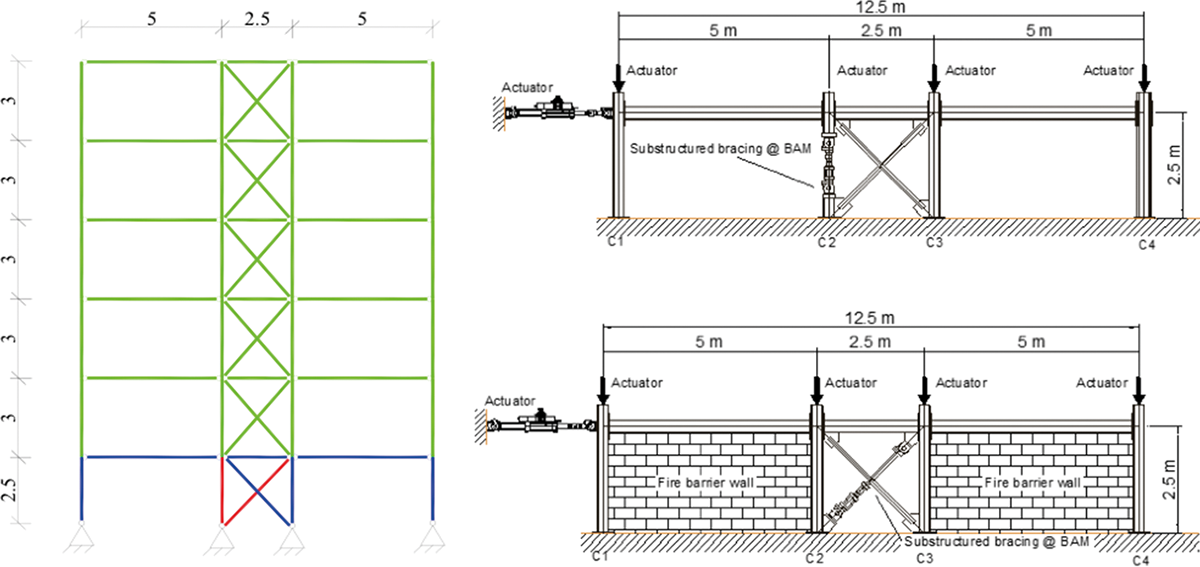Title of Project:
EQUFIRE – Multi-hazard performance assessment of structural and non-structural components subjected to seismic and fire following earthquake by means of geographically distributed testing
Hosting Research Infrastructure:
JRC
No. of Users
8
Team Leader:
Federal Institute for Materials Research and Testing
Manfred Korzen
Team:
Federal Institute for Materials Research and Testing
Elnaz Talebi
University of Trento
Nicola Tondini
Oreste S. Bursi
Luca Possidente
(ETH) Zürich
Giuseppe Abbiati
Božidar Stojadinović
Swiss Seismological Service, ETH Zurich
Laurentiu Danciu
Summary of Project:
Earthquakes are destructive and unpredictable events of nature with catastrophic consequences for both people and built environment. Secondary triggered effects can strike further an already weakened community, i.e. ground shaking, surface faults, landslides and tsunamis. In this respect, also fires following earthquake (FFE) are a considerable threat as they can be widespread both at the building level and at the regional level within the seismic affected area owing to the rupture of gas lines, failure of electrical systems etc. and at the same time failure of the compartmentation measures. Moreover, they are more difficult to tackle by the fire brigades because of their possible large number and extent as well as of possible disruptions within the infrastructural network that hinder their timely intervention and within the water supply system. In this context, the structural fire performance can worsen significantly because the fire acts on an already damaged structure. Furthermore, passive and active fire protections may have also been damaged by the seismic action and the fire can spread more rapidly if compartmentation measures have failed. Thus, the seismic performance of the non-structural components may directly affect the fire performance of the structural members. As consequence, the minimization of the non-structural damage is paramount in mitigating the possible drop in structural fire performance. The loss of fire protection is particularly dangerous for steel structures because the high thermal conductibility associated with small profile thicknesses entails quick temperature rise in the profiles with consequent fast loss of strength and stiffness. Moreover, spalling in concrete elements owing to the seismic action can also dangerously expose the rebars directly to the fire. Hence, an enhanced fire performance can be required in seismic-prone regions and no guidelines are currently given in the European standards. The effect of the seismic and the fire actions have been traditionally studied separately because: i) the inherent issues related to each action are quite complex per se; ii) researchers/practitioners are typically specialists in one particular field; iii) lab facilities have been normally conceived to reproduce one of the two hazards; iv) full-scale tests can be highly expensive; v) lack of well-developed numerical codes capable of performing FFE analysis at low computational cost (e.g. Opensees). Therefore, the few works that can be found are mainly numerical and there is a paucity of experimental tests that provide evidence on the actual FFE performance of the building, which can be strongly reduced by failure of fire protection and compartment elements. Thus, the proposed research aims to investigate the behaviour of structures subjected to seismic and FFE by also taking into account the damage of non-structural components such as the fire protection and compartment elements. To replicate the structural behaviour as close as possible to the actual case within a reasonable budget, an advanced experimental testing method that integrates geographically distributed hybrid simulation for seismic and fire testing will be employed. In this way, it will be possible to connect two different facilities by optimising the resources at disposal in terms of budget and skilled personnel. The ultimate aim is to provide sound experimental evidence and knowledge for future developments and improvements of the European standardization.


